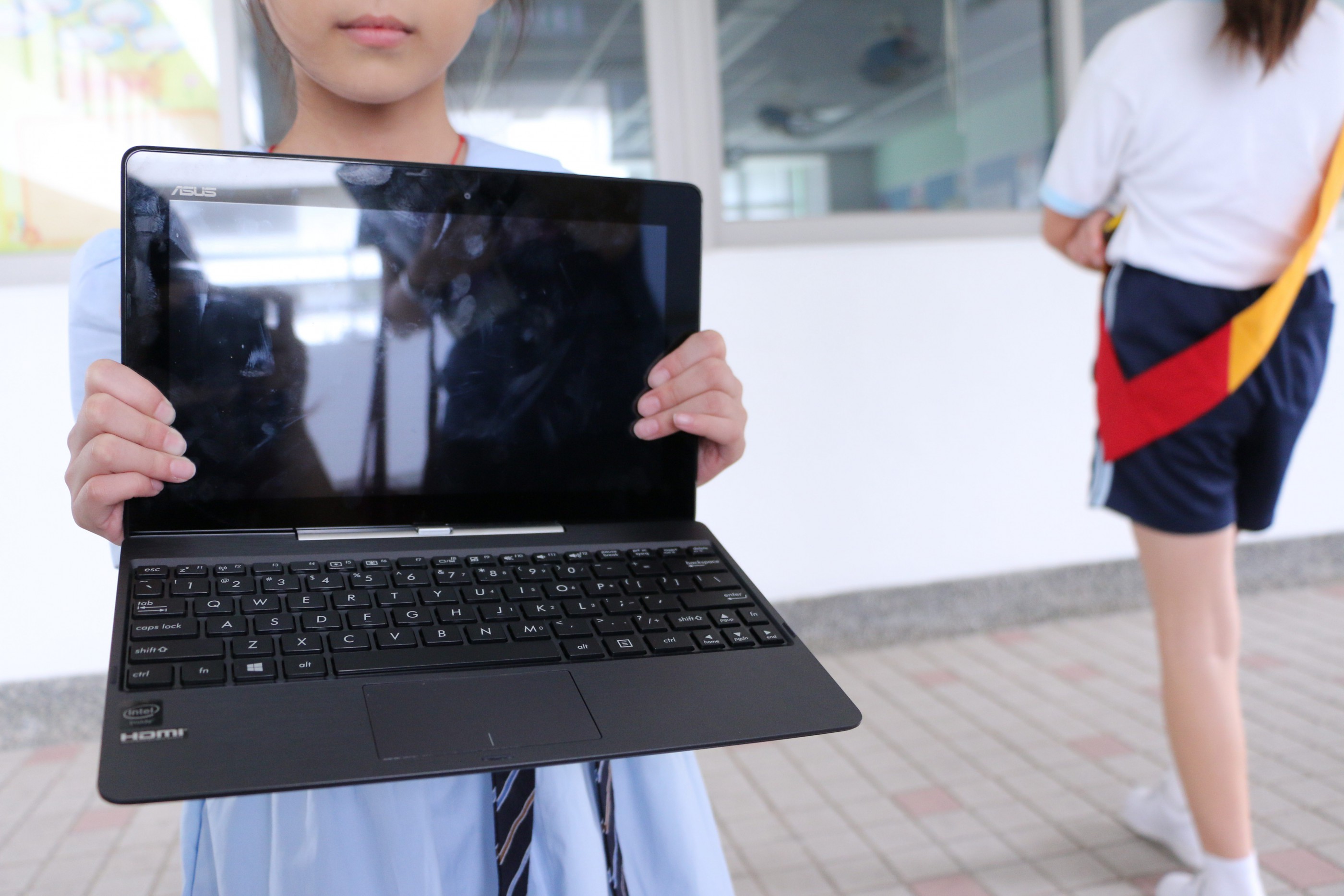E-textbooks have yet to win over all parents and teachers
By Natale Ching & Wing Chan
After a day at school, Primary Four student Anson Woo comes home and takes his iPad out of his schoolbag. Anson is not getting ready for an afternoon of online games, he is preparing to do his homework and the tablet is the “book” he uses for some of his lessons at school.
Anson’s school, St. Francis of Assisi’s English Primary School adopted e-textbooks for students from Primary Three to Primary Six two years ago and his mother has noticed some positive aspects of the change from traditional textbooks. “There is an interesting ‘read aloud’ function [on e-textbook],” says Mrs. Woo. “For instance, the Chinese e-textbook is equipped with a Putonghua ‘read aloud’ function. When his parents are not at home, my son knows how to read the words with this function.”
Woo recalls she had high expectations of e-textbooks because of their apparent advantages. She says it is a strain for Anson to carry his heavy schoolbag so she was happy he would only have to carry an iPad instead of a stack of books. The animations, interactive activities and colourful design of e-textbooks also boosted Anson’s learning interest.
But after two years, Woo concludes that the advantages have come at a price. She says Anson’s short-sightedness has become worse and he has become over-dependent on the iPad. Today, she is far more circumspect and even worried about e-textbooks.
The government is committed to promoting the use of e-textbooks and there are obvious advantages of this flexible, easily updated and interactive medium of teaching and learning. But three years after the administration approved funding for an e-textbook pilot scheme , the feedback from parents seem to be mixed.
Anson’s mother recalls the time that he came home in a panic saying: “Mum, my goodness! I can’t do my homework because the iPad ran out of battery! I forgot to charge it.” She says she was shocked by her son’s anxiety whenever his iPad was unavailable.
Woo’s concern prompted her to lock up the iPad during the summer holiday. She encouraged Anson to read printed books and pick up hobbies such as baseball, painting and chess to rid him of what she saw as an addiction. She thinks it is important for him to know how to learn without the iPad.

To further reduce Anson’s reliance on the iPad, Woo, like many other parents at the school, bought an extra set of Chinese and general studies printed textbooks just to discourage Anson from using the iPad when revising at home. After shelling out thousands of dollars for the device, plus a total of HK$1,300 for the e-textbooks – which is comparable to the cost of traditional textbooks – she ended up paying another extra HK$400. “It is never a cost-cutting solution for parents,” says Woo.
While she was frustrated by Anson’s dependence on the iPad, Anson was frustrated by bugs in the homework section of the mathematics e-textbook, which would occasionally clear all the work he had done. Anson and his classmates often had to take screenshots of all their finished homework to show their teacher just in case it was lost.
Anson also finds it hard to make notes on e-textbooks, as it is hard to doodle and type notes on an iPad. Even if he does manage to jot them down, he finds his messy notes hard to understand when it comes to revision time. His mother thinks writing on an iPad discourages Anson from learning the stroke order of Chinese characters.







































